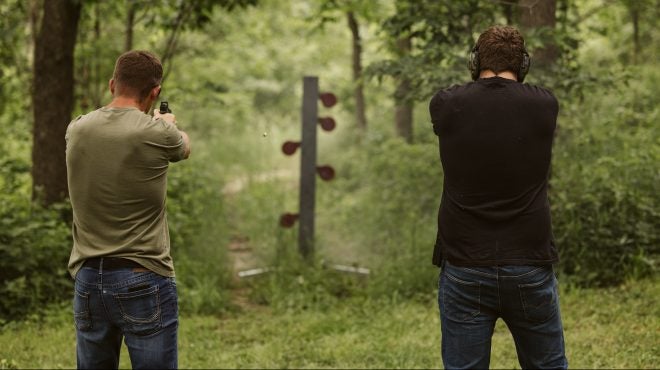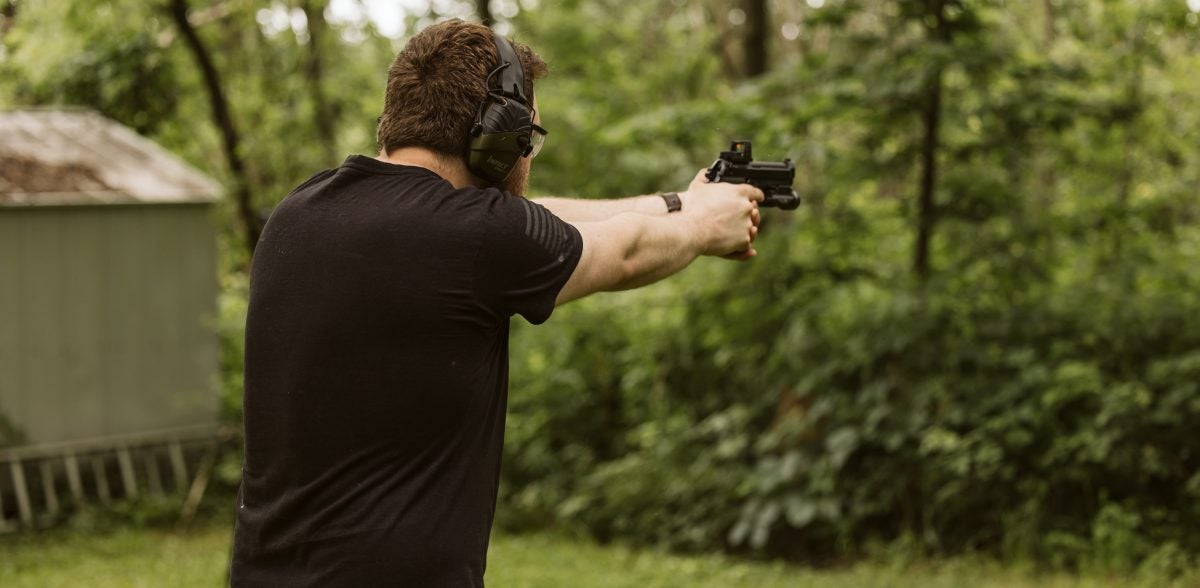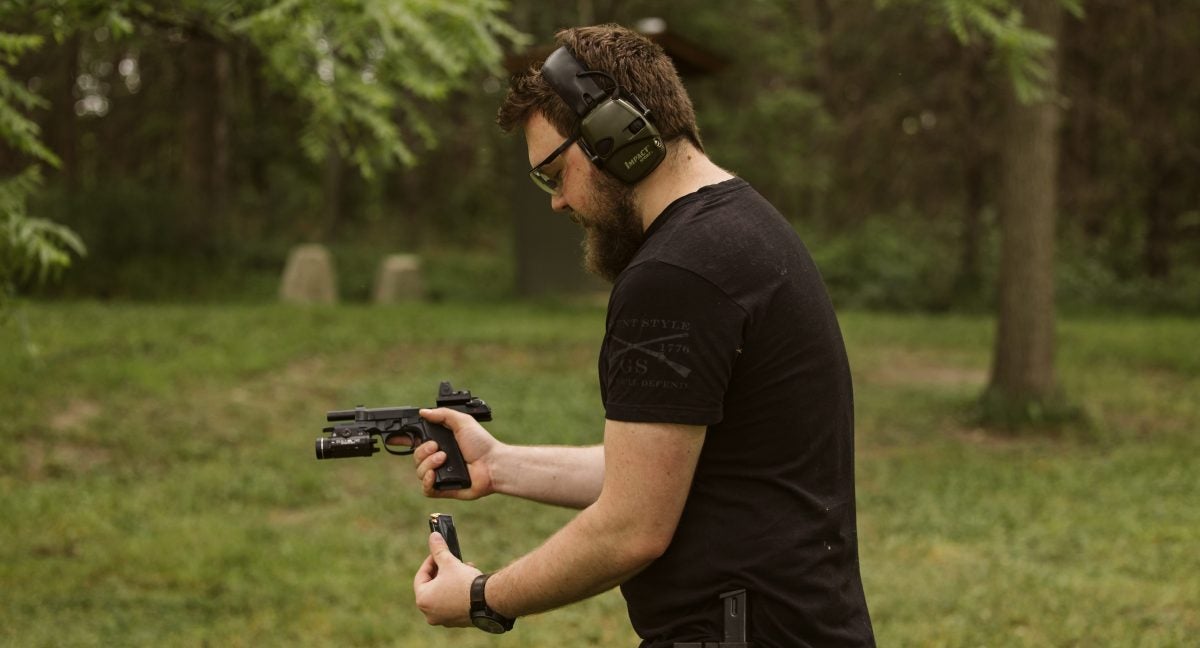Teaching Others About Firearms – What to Do with a Malcontent or Rascal
Phil Godding 02.15.23

First, a disclaimer – I’ve been told it might be career-ending to not speak of everyone in the most pleasant of terms; call them a malcontent or rascal. If, for example, I might besmirch a person I could be called on my bad behavior at any point in the future. I was also told that changing my mind in a series of public comments could also be career-ending. I’ve concluded that there are many things that will ultimately be career-ending so I will just muddle on because someone – at some point – will accuse me of changing my mind and I might as well admit it here.
Now, a second disclaimer – the title has words that some might consider in bad taste. Truth is, I might have been called both of those words (or worse) at some point in my lifetime. In the context of this essay I just want to say it is easy to get frustrated when teaching a mixed class of novices and “experts.” I know how hard it is to teach everyone at the same level. How to start to start this discussion? This is a hard concept, but it needs to be said so here goes: not everyone is nice or reasonable. Not everyone brings the same interest or ability to be taught to the classroom.
There, I said it publicly. If you are teaching a group of ten students at least one is going to be unreasonable, all knowing, never wrong, and an expert on all things – a legend in their own mind. You know the type. Think of it this way: if you are teaching a group of ten, and if one in ten is unreasonable, and every one of the ten is nice, the unreasonable person just might be… oh, never mind. There are several groups of students who show up in our classes: let’s consider the following unscientifically chosen groupings.
Group A
Those who want to learn, have an open mind to be taught, and are always trying to learn something new. Usually these folks lay back in the weeds, take notes, ask clarifying questions, and don’t hog the doughnuts and coffee. When range time comes they can be taught and progress rapidly.
Group B
The people who can’t shoot for some physical or emotional reason. I recall trying to teach a newly divorced person how to protect herself from someone who was stalking her – at least defend herself until the local constabulary could be summoned. Every weapon including some small .22s seemed to jump out of her hand. Weakness was endemic. In her case, we talked about all sorts of other options, but she would end up hurting herself, her children, or her pets once she started defending herself with anything more dangerous than a butter knife. I wanted no part of that. We covered many options from pepper spray to OFP (Order for Protection) to hiring an attorney, but using a firearm was probably not in her best interest.
Group C
I also have a fair number of people who take our classes that come as pure skeptics. They are often up front about wanting to sit in so they can argue better against the 2nd Amendment. They make it clear there is no need for self-defense. I really like these students because as much as they want to make emotional arguments about why the class is bad or my methods immoral they are just plain fun to teach. I simply ask them to listen and tell them I’ll address their concerns in a thoughtful manner as I can. That means in large classes they will get less attention and in small classes they often get my undivided attention as I model for Group A how to be a good ambassador for our sport.
If I can get the skeptic talking, I’ll figure out their reason for resistance and then slowly give them my story. I started out as a skeptic. Really, I started as an open minded skeptic about the need for self-defense and look at me now. Finally, I give the Group C member some special range time with something that is sure to leave them with a smile on their face. I can make this prediction because I’ve seen that smile many times. Before I hand them the weapon I predict they will have fun. I predict they will turn their frown upside down when they start shooting one of my 1911 firearms in 9mm. The all-metal guns have limited recoil as to be enjoyable.
These guns have that delightful yet highly controllable muzzle flip – at the squeeze of the trigger – making it oh so easy to get back on target. Happens every time. Even the grumpiest student who is willfully trying not to have a good time will begin to crack a smile as they finish the magazine. It is my experience that these students will walk away, claiming they are still unsure about self-protection, but then want to know the make and model of that smile maker! Inevitably, they will return for the next class (I never charge those who are just coming to learn and don’t want a certificate) and bring a friend or two with them.
Group D
Those students who shouldn’t shoot or carry a weapon – at least not with my class associated with their permit. They are chronically angry, chronically focused on just one topic, and have just one solution for every problem scenario we discuss. I will often refer to “Johnny one note” as someone who will only have one way of viewing the anticipated variability among millions of people. The Group D person is the one who will likely give the rest of us law abiding citizens a bad label. A quiet admonishment followed by “here is your money back, go find another class” seems a reasonable approach. I don’t want to embarrass them or make a big scene; I just want control of my class again.
The key to all of these scenarios is to think about them ahead of time and have a plan of action in place. After all, avoidance is the best plan of action, right?
Okay, one last thought. There is one more group of class participants, Group E, who think they cannot shoot and cannot be taught. Your range time preparation will shine here. As a general rule, this person doesn’t think they have a skill set to be honed, but you can prove them wrong. I like the adage “aim small, shoot small” and that can certainly be taught. A good teacher really does not try to be a malcontent or rascal. From my perspective, I purposely don’t fire a gun when I’m with a class for two simple reasons.
- If I’m focused down range I’m not minding the class and I want my fall attention on the students.
- I don’t want to model something the novice student cannot achieve in one class.
I will from time to time, if I have an extra range officer handy, take a gun and prove I can shoot as good with two eyes open as they can with one eye open – not to embarrass them, but to prove it can be done. With enough practice! The novice may also need to be exposed to what a quick double-tap could sound like because they are so focused on getting the perfect sight pictures and (I wish it were true) the perfect trigger pull. That is not being a malcontent or rascal, just a good teacher. If there is adequate range officer coverage. Safety first.

